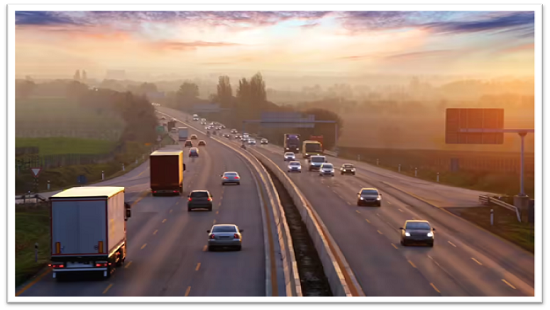
Redefining the Future of Transport, Maharashtra Leads the Green Highway Revolution
In a landmark step toward sustainable mobility, Maharashtra Chief Minister Devendra Fadnavis inaugurated India’s first electric highway corridor connecting Mumbai and Pune. The initiative marks a pivotal moment in India’s journey toward clean transportation and is part of Maharashtra’s broader vision to electrify all major highways by 2028.
The corridor is designed to drastically reduce carbon emissions from freight transport, which currently accounts for nearly 30% of India’s road-based emissions. By integrating electric mobility infrastructure into the country’s busiest industrial route, the project signals a transformative shift from fossil fuel dependency to renewable-powered logistics.
A Symbol of Green Industrial Leadership
At the inauguration held in Pimpri-Chinchwad, Fadnavis also unveiled India’s first made-in-India electric heavy-duty truck, developed by Blue Energy Motors. The vehicle operates on battery-swap technology, enabling drivers to replace depleted batteries within minutes, eliminating long charging downtime and improving logistics efficiency.
The event, hosted at Blue Energy’s Chakan facility in Pune, showcased how industrial innovation and state policy can align to accelerate sustainable progress. Fadnavis hailed the new truck as a symbol of Maharashtra’s leadership in green industrial growth, emphasizing that sustainability and self-reliance are no longer separate goals but complementary pillars of India’s development strategy.
Maharashtra’s 2028 Electrification Goal - Ambitious, Achievable, and Essential
Maharashtra’s plan to electrify its major highways by 2028 is a cornerstone of its long-term climate strategy. The vision includes developing electric freight corridors, deploying battery-swap and ultra-fast charging stations, and encouraging EV-based logistics fleets across the state.
Outlining this roadmap, Fadnavis reiterated the government’s commitment to supporting the electric vehicle ecosystem through favourable policies, subsidies, and infrastructure partnerships. He also announced that by 2035, 70% of Maharashtra’s total energy demand will be met through solar power, drastically cutting dependence on fossil fuels.
Technological progress is expected to play a critical role. According to projections shared by Fadnavis, advances in battery design could soon enable trucks to travel up to 400 kilometres on a single charge, double the current range. This improvement would make electric freight both economically viable and logistically efficient, accelerating nationwide adoption.
Blue Energy Motors Driving the Transition
Blue Energy Motors has emerged as a central player in India’s green logistics revolution. The company has already deployed over 1,000 LNG trucks, holding nearly 60% of the market share in India’s sustainable heavy-vehicle segment.
To complement the electric highway project, Blue Energy signed a Memorandum of Understanding with the Maharashtra government to build a new manufacturing facility with an annual capacity of 30,000 electric trucks. The plant represents a 3,500 crore investment, expected to generate significant employment and technological spillover in the state’s industrial ecosystem.
Founder and Managing Director Anirudh Bhuwalkar described the Mumbai–Pune electric corridor as the beginning of India’s electric freight transition. He also introduced the company’s Energy-as-a-Service model, a subscription-based approach allowing logistics operators to reduce upfront costs and benefit from continuous battery and maintenance services. This innovation aims to make electric freight affordable, scalable, and sustainable for the long term.
A Blueprint for Green Infrastructure Expansion
The Mumbai–Pune electric highway is not just an isolated initiative; it is a blueprint for nationwide replication. Maharashtra plans to extend similar electric corridors across its major freight routes, creating a statewide network of clean logistics infrastructure.
Strategically located charging and battery-swap hubs will ensure uninterrupted operations for transporters, particularly those handling time-sensitive freight. This network will be designed to serve both private logistics operators and public transport fleets, maximizing utilization and reducing total operational costs.
Such integration reflects a systems-based approach, combining industrial policy, renewable energy deployment, and mobility innovation under one umbrella. It is this model that could help India meet its net-zero target by 2070 while boosting competitiveness in its transport and manufacturing sectors.
Economic and Environmental Impact
The economic potential of electric highways extends far beyond emissions reduction. By enabling efficient freight electrification, the state can cut diesel imports, saving thousands of crores annually; lower operational costs for logistics companies by up to 40% over vehicle lifecycles; reduce urban air pollution along major industrial corridors; and promote green job creation in manufacturing, maintenance, and renewable energy sectors.
These combined effects position Maharashtra as both a policy innovator and a growth catalyst for India’s clean energy transition. It demonstrates how environmental stewardship and economic expansion can progress hand-in-hand when guided by data, technology, and long-term vision.
From Innovation to Implementation
The success of this project will depend on scalability, affordability, and industry collaboration. As the cost of EV batteries continues to fall globally—by nearly 85% since 2010—India is entering a critical window to lead the electric freight revolution.
For Maharashtra, the Mumbai–Pune corridor is a proof of concept that combines technological innovation, industrial investment, and environmental responsibility. The challenge now lies in replicating this model across the state’s other industrial zones, from Nagpur and Nashik to Aurangabad and Solapur.
Collaborations with private sector leaders like Blue Energy Motors and global renewable energy firms can accelerate this process, ensuring that India remains at the forefront of green mobility innovation.
A New Chapter in India’s Transport Evolution
The inauguration of India’s first electric highway between Mumbai and Pune marks a turning point in the nation’s logistics and sustainability narrative. It embodies a vision where infrastructure is not only built for growth but also for the planet’s well-being.
By aligning industrial innovation with environmental foresight, Maharashtra is setting a precedent for the rest of India, showing that economic progress and ecological balance can coexist harmoniously.
The road from Mumbai to Pune, once a symbol of industrial expansion, is now the pathway to a cleaner, smarter, and more sustainable future, moving India closer to its goal of net-zero emissions and global green leadership.





